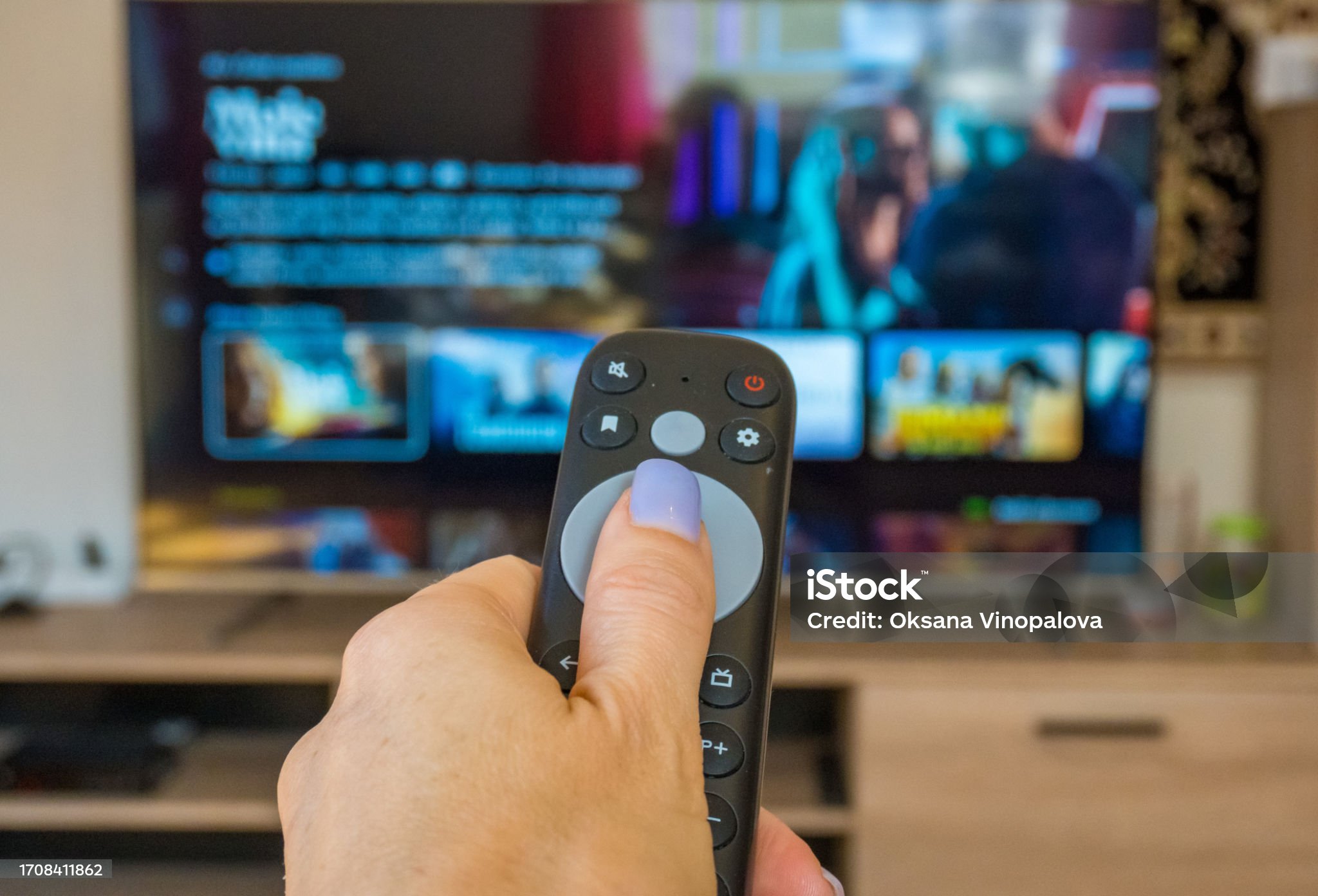1.Introduction to IPTV

IPTV, also known as Internet Protocol Television, is gaining increasing influence within the media industry. In stark contrast to traditional TV broadcasting methods that use costly and largely exclusive broadcasting technologies, IPTV is transmitted over broadband networks by using the same Internet Protocol (IP) that powers millions of home computers on the modern Internet. The concept that the same on-demand migration lies ahead for the multiscreen world of TV viewing has already grabbed the attention of numerous stakeholders in technology integration and future potential.
Viewers have now started to watch TV programs and other video entertainment in many different places and on numerous gadgets such as smartphones, desktops, laptops, PDAs, and other similar devices, alongside conventional televisions. IPTV is still relatively new as a service. It is expanding rapidly, and various business models are taking shape that may help support growth.
Some believe that low-budget production will probably be the first content production category to transition to smaller devices and explore long-tail strategies. Operating on the business side of the TV broadcasting pipeline, the current state of IPTV hosting or service, however, has several clear advantages over its traditional counterparts. They include crystal-clear visuals, on-demand viewing, custom recording capabilities, communication features, internet access, and immediate technical assistance via alternate wireless communication paths such as cell phones, PDAs, satellite phones, etc.
For IPTV hosting to work efficiently, however, the internet gateway, the central switch, and the IPTV server consisting of content converters and server blade assemblies have to interoperate properly. Dozens regional and national hosting facilities must be highly reliable or else the stream quality falters, shows may vanish and are not saved, chats stop, the visual display vanishes, the sound becomes discontinuous, and the shows and services will not work well.
This text will address the competitive environment for IPTV services in the UK and the US. Through such a detailed comparison, a number of important policy insights across several key themes can be revealed.
2.Legal and Policy Structures in the UK and US Media Sectors

According to legal principles and the related academic discourse, the choice of the regulation strategy and the policy specifics depend on how the market is perceived. The regulation of media involves competition policy, media proprietary structures, consumer safeguarding, and the safeguarding of at-risk populations.
Therefore, if the goal is to manage the market, we must comprehend what defines the media market landscape. Whether it is about ownership limits, studies on competition, consumer protection, or children’s related media, the policy maker has to possess insight into these areas; which media sectors are seeing significant growth, where we have competitive dynamics, vertically integrated activities, and ownership overlaps, and which sectors are lagging in competition and suitable for fresh tactics of market players.
Put simply, the media market dynamics has always shifted from static to dynamic, and only if we analyze regulatory actions can we anticipate upcoming shifts.
The rise of IPTV everywhere makes its spread more common. By combining standard TV features with innovative ones such as interactive IT-based services, IPTV has the potential to be a significant element in boosting remote area viability. If so, will this be adequate to reshape regulatory approaches?
We have no proof that IPTV has extra attractiveness to individuals outside traditional TV ecosystems. However, some recent developments have hindered IPTV expansion – and it is these developments that have led to reduced growth expectations for IPTV.
Meanwhile, the UK adopted a flexible policy framework and a proactive consultation with industry stakeholders.
3.Market Leaders and Distribution

In the United Kingdom, BT is the leading company in the UK IPTV market with a market share of 1.18%, and YouView has a 2.8% stake, which is the context of single and dual-play offerings. BT is typically the leader in the UK according to market data, although it varies marginally over time across the 7 to 9 percent bracket.
In the United Kingdom, Virgin Media was the pioneer in launching IPTV based on digital HFC networks, followed by BT. Netflix and Amazon Prime are the strongest OTT services in the UK IPTV market. Amazon has its own digital set-top box-focused service called Amazon Fire TV, comparable to Roku, and has just launched in the UK. However, Netflix and Amazon are absent from telecom providers' offerings.
In the United States, AT&T is the top provider with a market share of 17.31%, outperforming Verizon’s FiOS at a close 16.88%. However, considering only IPTV services over DSL, the leader is CenturyLink, trailing AT&T and Frontier, and Lumen.
Cable TV has the overwhelming share of the American market, with AT&T successfully attracting an impressive 16.5 million users, primarily through its U-verse service and DirecTV service, which also functions in Latin America. The US market is, therefore, split between the major legacy telecom firms offering IPTV services and new internet companies.
In Europe and North America, leading companies offer integrated service packages or a loyal customer strategy for the majority of their marketing, offering three and four-service bundles. In the United States, AT&T, Verizon, and Lumen depend on their proprietary infrastructure or existing telecom networks to provide IPTV options, though to a lesser extent.
4.Subscription Types and Media Content

There are differences in the programming choices in the IPTV sectors of the UK and US. The types of media offered includes live broadcasts from national and regional networks, streaming content and episodes, recorded programming, and original shows like TV shows or movies exclusive to the platform that aren’t available for purchase or seen on television outside of the service.
The UK services feature classic channel lineups comparable with the UK cable platforms. They also provide moderately sized plans that cover essential pay-TV options. Content is categorized not just by taste, but by distribution method: terrestrial, satellite, Freeview, and BT Vision VOD.
The main differentiators for the IPTV market are the payment structures in the form of static plans versus the more adaptable à la carte model. UK IPTV subscribers can choose additional bundles as their preferences evolve, while these channels are included by default in the US, in line with a user’s initial long-term plan.
Content collaborations reflect the distinct policy environments for media markets in the US and UK. The trend of reduced exclusivity periods and the ongoing change in the market has notable effects, the most direct being the business standing of the UK’s dominant service provider.
Although a new player to the saturated and challenging UK TV sector, Setanta is positioned to gain significant traction through presenting a modern appeal and securing top-tier international rights. The power of branding is a significant advantage, combined with a product that has a competitive price point and offers die-hard UK football supporters with an attractive additional product.
5.Future of IPTV and Tech Evolution

5G networks, integrated with millions of IoT devices, have transformed IPTV transformation with the integration of AI and machine learning. Cloud computing is greatly enhancing AI systems to implement new capabilities. Proprietary AI recommendation systems are gaining traction by streaming services to enhance user engagement with their own advantages. The video industry has been revolutionized with a fresh wave of innovation.
A enhanced bitrate, by increasing resolution and frame rate, has been a main objective in improving user experience and gaining new users. The advancements in recent years stemmed from new standards crafted by industry stakeholders.
Several proprietary software stacks with a compact size are nearing release. Rather than focusing on feature additions, such software stacks would allow video delivery services to optimize performance to further refine viewer interactions. This paradigm, like the previous ones, depended on consumer attitudes and their desire to see value for their money.
In the near future, as the technology adoption frenzy creates a uniform market landscape in viewer satisfaction and industry growth levels out, we foresee a more streamlined tech environment to keep senior demographics interested.
We emphasize a couple of critical aspects below for the two major IPTV markets.
1. All the major stakeholders may participate in the evolution in content consumption by transforming traditional programming into interactive experiences.
2. We see immersive technologies as the main catalysts behind the rising trends for these domains.
The constantly changing audience mindset puts information at the core for every stakeholder. Legal boundaries would limit straightforward access to user information; hence, user data safeguards would hesitate to embrace new technologies that may leave their users vulnerable to exploitation. However, the current integrated video on-demand service market makes one think otherwise.
The IT security score is presently at an all-time low. Technological leaps and bounds iptv cheap have made cyber breaches more digitally sophisticated than a job done hand-to-hand, thereby favoring digital fraudsters at a greater extent than black-collar culprits.
With the advent of centralized broadcasting systems, demand for IPTV has been growing steadily. Depending on viewer habits, these developments in technology are set to revolutionize IPTV.
References:Bae, H. W. and Kim, D. H. "A Study of Factors affecting subscription to IPTV Service." JBE (2023). kibme.org
Baea, H. W. and Kima, D. H. "A Study about Moderating Effect of Age on The IPTV Service Subscription Intention." JBE (2024). kibme.org
Cho, T., Cho, T., and Zhang, H. "The Relationship between the Service Quality of IPTV Home Training and Consumers' Exercise Satisfaction and Continuous Use during the COVID-19 Pandemic." Businesses (2023). mdpi.com
Comments on “ The Future of IPTV in the UK and USA: Emerging Innovations ”